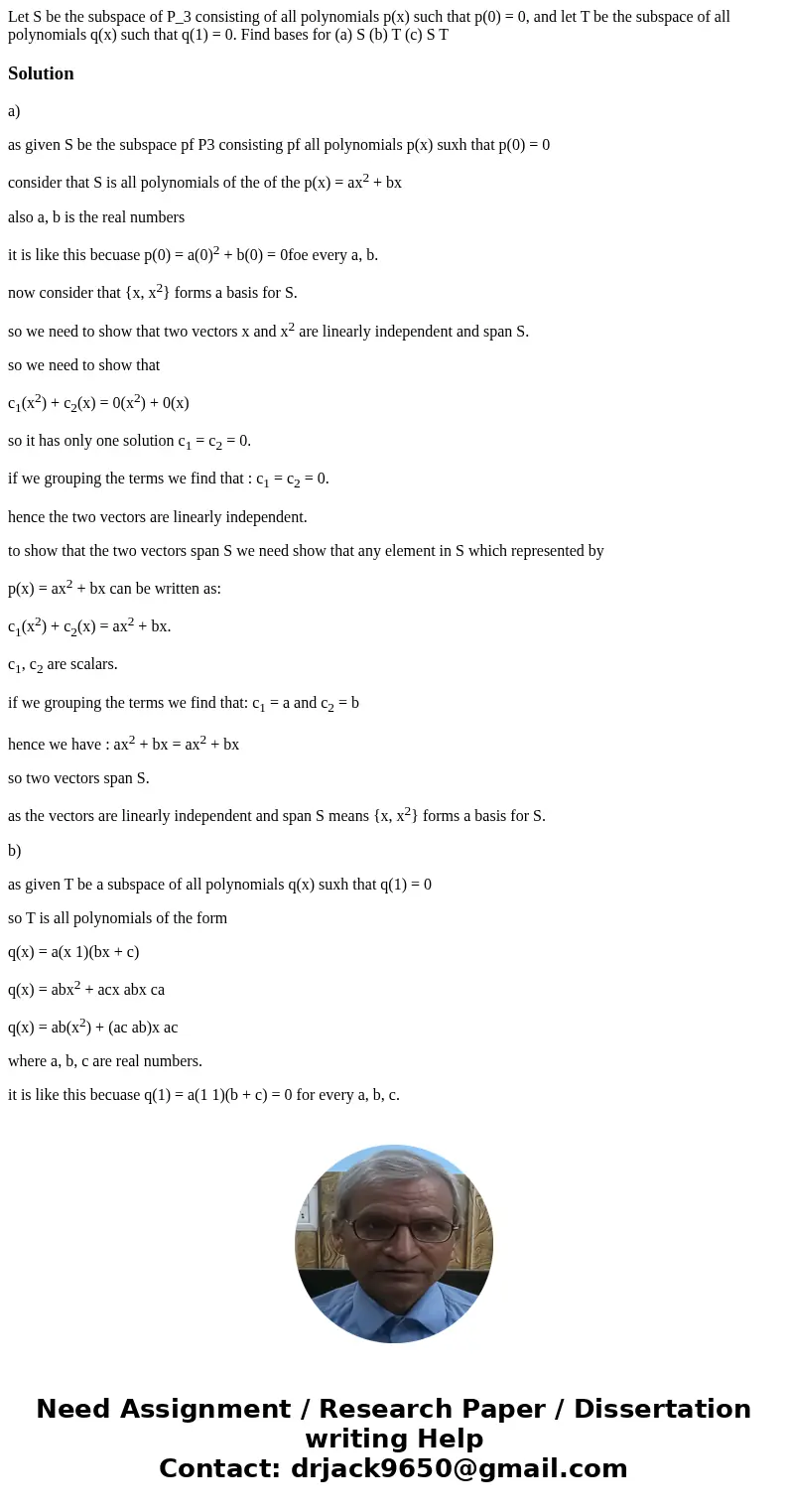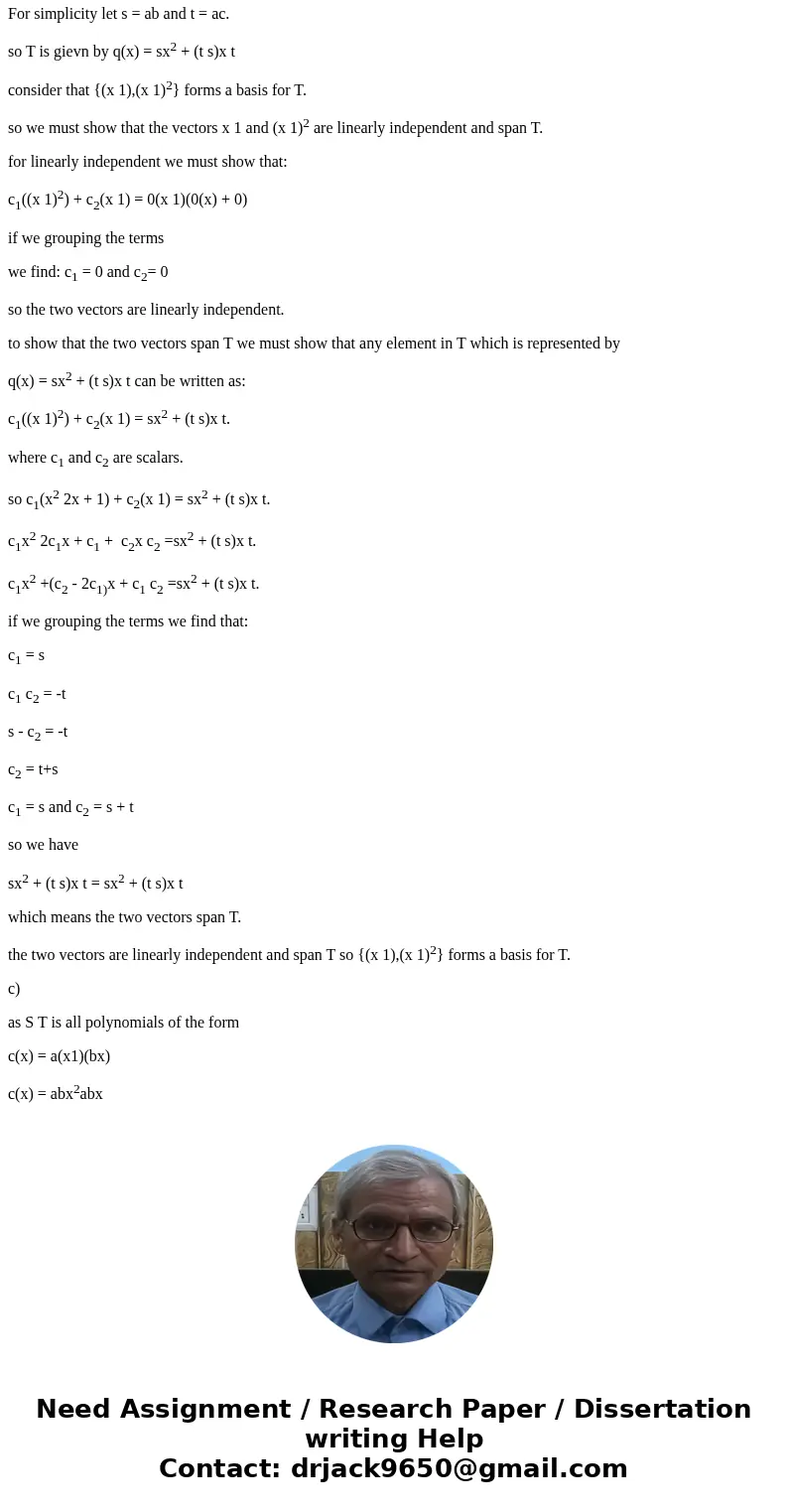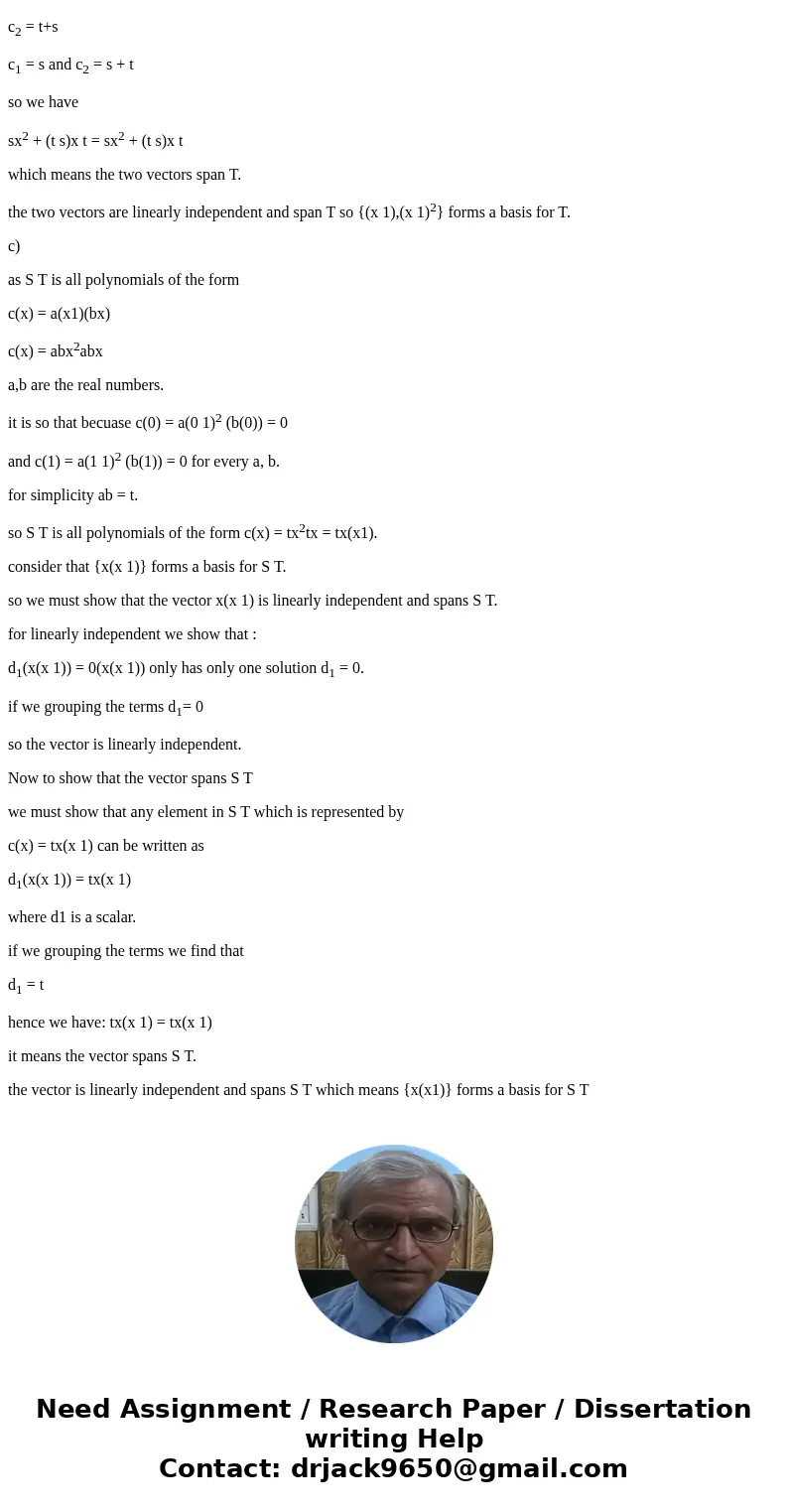Let S be the subspace of P3 consisting of all polynomials px
Solution
a)
as given S be the subspace pf P3 consisting pf all polynomials p(x) suxh that p(0) = 0
consider that S is all polynomials of the of the p(x) = ax2 + bx
also a, b is the real numbers
it is like this becuase p(0) = a(0)2 + b(0) = 0foe every a, b.
now consider that {x, x2} forms a basis for S.
so we need to show that two vectors x and x2 are linearly independent and span S.
so we need to show that
c1(x2) + c2(x) = 0(x2) + 0(x)
so it has only one solution c1 = c2 = 0.
if we grouping the terms we find that : c1 = c2 = 0.
hence the two vectors are linearly independent.
to show that the two vectors span S we need show that any element in S which represented by
p(x) = ax2 + bx can be written as:
c1(x2) + c2(x) = ax2 + bx.
c1, c2 are scalars.
if we grouping the terms we find that: c1 = a and c2 = b
hence we have : ax2 + bx = ax2 + bx
so two vectors span S.
as the vectors are linearly independent and span S means {x, x2} forms a basis for S.
b)
as given T be a subspace of all polynomials q(x) suxh that q(1) = 0
so T is all polynomials of the form
q(x) = a(x 1)(bx + c)
q(x) = abx2 + acx abx ca
q(x) = ab(x2) + (ac ab)x ac
where a, b, c are real numbers.
it is like this becuase q(1) = a(1 1)(b + c) = 0 for every a, b, c.
For simplicity let s = ab and t = ac.
so T is gievn by q(x) = sx2 + (t s)x t
consider that {(x 1),(x 1)2} forms a basis for T.
so we must show that the vectors x 1 and (x 1)2 are linearly independent and span T.
for linearly independent we must show that:
c1((x 1)2) + c2(x 1) = 0(x 1)(0(x) + 0)
if we grouping the terms
we find: c1 = 0 and c2= 0
so the two vectors are linearly independent.
to show that the two vectors span T we must show that any element in T which is represented by
q(x) = sx2 + (t s)x t can be written as:
c1((x 1)2) + c2(x 1) = sx2 + (t s)x t.
where c1 and c2 are scalars.
so c1(x2 2x + 1) + c2(x 1) = sx2 + (t s)x t.
c1x2 2c1x + c1 + c2x c2 =sx2 + (t s)x t.
c1x2 +(c2 - 2c1)x + c1 c2 =sx2 + (t s)x t.
if we grouping the terms we find that:
c1 = s
c1 c2 = -t
s - c2 = -t
c2 = t+s
c1 = s and c2 = s + t
so we have
sx2 + (t s)x t = sx2 + (t s)x t
which means the two vectors span T.
the two vectors are linearly independent and span T so {(x 1),(x 1)2} forms a basis for T.
c)
as S T is all polynomials of the form
c(x) = a(x1)(bx)
c(x) = abx2abx
a,b are the real numbers.
it is so that becuase c(0) = a(0 1)2 (b(0)) = 0
and c(1) = a(1 1)2 (b(1)) = 0 for every a, b.
for simplicity ab = t.
so S T is all polynomials of the form c(x) = tx2tx = tx(x1).
consider that {x(x 1)} forms a basis for S T.
so we must show that the vector x(x 1) is linearly independent and spans S T.
for linearly independent we show that :
d1(x(x 1)) = 0(x(x 1)) only has only one solution d1 = 0.
if we grouping the terms d1= 0
so the vector is linearly independent.
Now to show that the vector spans S T
we must show that any element in S T which is represented by
c(x) = tx(x 1) can be written as
d1(x(x 1)) = tx(x 1)
where d1 is a scalar.
if we grouping the terms we find that
d1 = t
hence we have: tx(x 1) = tx(x 1)
it means the vector spans S T.
the vector is linearly independent and spans S T which means {x(x1)} forms a basis for S T



 Homework Sourse
Homework Sourse